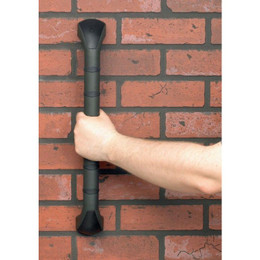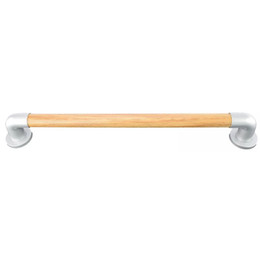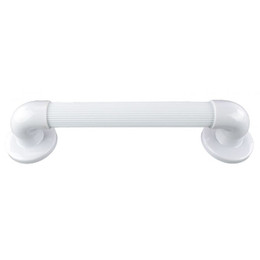Why outdoor grab rails are ideal for better independent living
- Increased Safety: Outdoor grab rails prevent slips and falls by providing a sturdy handhold as you walk. This added security makes a significant difference, especially in wet or icy conditions.
- Enhanced Confidence: Having a reliable handrail to steady yourself on boosts your confidence when moving around outside. This encourages more outdoor activities and improves your overall well-being.
- Easy Installation: These grab rails install easily on most surfaces, whether a brick wall, wooden post, or concrete. You can place them wherever you need extra support around your home.
- Durability: Constructed from weather-resistant materials, outdoor grab rails withstand the elements, providing long-lasting support throughout the year.
- Discreet and Stylish: Modern outdoor grab rails come in various designs and colours, allowing them to blend seamlessly with your home’s exterior while still offering essential support.
Installing outdoor grab rails gives you greater freedom and confidence in your daily outdoor activities, making them a smart investment for anyone looking to enhance their independent living experience.
What is the Difference Between Grab Rail and Hand Rail?
Grab Rail:
- Purpose: Grab rails are primarily designed to provide support and stability to help individuals maintain balance and prevent falls, especially in areas like bathrooms and stairways.
- Location: Commonly installed in areas where extra support is needed, such as beside toilets, bathtubs, showers, and stairs.
- Design: Typically short and sturdy, grab rails are mounted at a height that makes it easy to grasp securely. They are often fixed in place and do not move.
Hand Rail:
- Purpose: Hand rails are used to offer support while walking or ascending/descending stairs. They are also meant to guide people and provide a continuous support system along a path or staircase.
- Location: Commonly installed along staircases, ramps, and hallways where people need guidance or support over longer distances.
- Design: Hand rails run continuously along the length of a staircase or walkway and are usually mounted at a height that is comfortable for users to hold onto while walking.
What Are the Rules for Outdoor Handrails in the UK?
In the UK, outdoor handrails must adhere to specific building regulations to ensure safety and accessibility. Here are the key rules:
- Height: Outdoor handrails should be between 900mm and 1100mm in height from the pitch line (the line where the steps meet). This ensures they are at a comfortable height for most users.
- Strength and Stability: Handrails must be securely fixed and able to support a significant amount of weight. They should not be wobbly or unstable.
- Continuity: For stairs with a flight of more than three steps, the handrail must be continuous and extend beyond the top and bottom of the stairs to provide support throughout the entire length of the staircase.
- Diameter: The diameter of the handrail should be between 32mm and 50mm. This size range ensures that users can comfortably grip the handrail.
- Non-Slip Surface: Handrails should have a non-slip surface or texture to prevent users from losing their grip, especially in wet conditions.
- No Sharp Edges: All parts of the handrail should be smooth and free of sharp edges to prevent injuries.
- Visibility: The handrail should be easily visible, with contrasting colours or markings to help people with visual impairments.
These regulations are designed to ensure that outdoor handrails provide safe, reliable support and accessibility for everyone.



